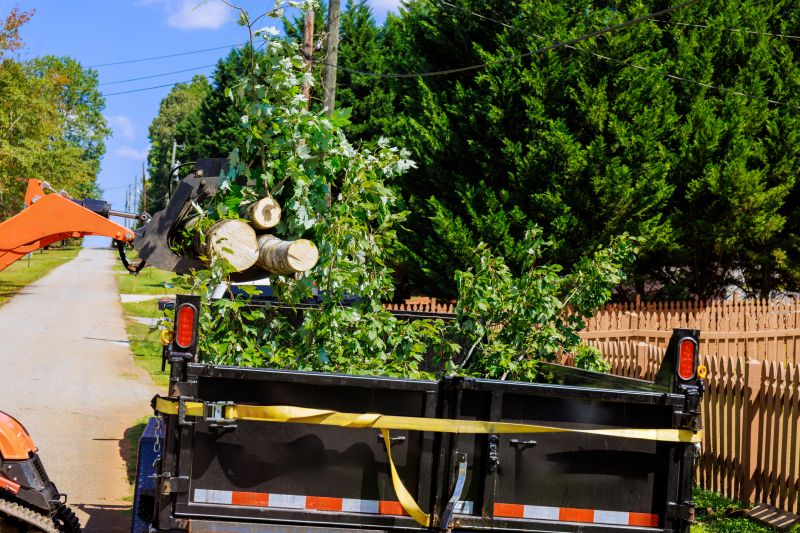Popular Tree Branch Hauling Tools for Efficient Yard Cleanup
Discover the most sought-after products that simplify branch hauling and help you maintain a tidy, well-kept outdoor space.
 Handling tree branches can be a demanding task that requires the right tools to ensure safety and efficiency. Whether pruning, trimming, or removing fallen limbs, having a well-suited set of products can make the process smoother. Different tools cater to various branch sizes and types of work, from light pruning to heavy-duty removal. Selecting appropriate equipment not only improves safety but also helps maintain the health and aesthetics of trees and surrounding landscapes.
Handling tree branches can be a demanding task that requires the right tools to ensure safety and efficiency. Whether pruning, trimming, or removing fallen limbs, having a well-suited set of products can make the process smoother. Different tools cater to various branch sizes and types of work, from light pruning to heavy-duty removal. Selecting appropriate equipment not only improves safety but also helps maintain the health and aesthetics of trees and surrounding landscapes.
Top Overall Option
Multi-Purpose Tree Limb Handling Set
A versatile collection of tools designed to handle various sizes of tree branches, including pruning shears, loppers, and a collapsible pruning saw. Made with durable materials and ergonomic handles, this set facilitates safe and efficient branch management for homeowners and professionals alike.
Types of Products For Tree Branch Haulings
Pruning Shears
Compact and easy to handle, ideal for trimming smaller branches and twigs.
Loppers
Long-handled tools suitable for cutting medium-sized branches with increased leverage.
Pruning Saws
Designed for cutting thicker branches and limbs, often collapsible for portability.
Pole Pruners
Extendable tools that allow reach to high branches without climbing.
Chainsaw
Powerful equipment for heavy-duty branch removal, suitable for large limbs.
Tree Climbing Gear
Safety harnesses and climbing spikes for accessing high branches securely.
Rope and Pulley Systems
Assist in lifting and lowering heavy branches safely.
Debris Bags
Large bags for collecting and transporting cut branches.
Work Gloves
Protect hands from cuts, splinters, and abrasions during branch handling.
Safety Helmets
Protective headgear to safeguard against falling debris.
Extension Poles
Attach to manual tools for reaching high branches without ladder use.
Ladder
Stable and secure ladders for accessing elevated branches safely.
Popular Choices
Widely used for trimming small branches and shaping plants.
Popular for reaching high branches with minimal effort.
Commonly chosen for heavy branch removal and large limb cutting.
Preferred for cutting thicker branches in a single cut.
Trending for safe lifting of large branches during cleanup.
Popular for ensuring safety during high branch work.
Convenient for gathering cut branches and debris.
Favored by professionals for high tree access.
Commonly used for trimming tall trees without ladders.
Essential for protecting hands during branch handling.
Popular for providing stable access to elevated branches.
Widely used for head protection during tree work.
When choosing products for tree branch haulings, considerations include the weight and length of the tools, the ease of maneuverability, and the durability of materials used. Some tools are designed for quick attachment and detachment, making them suitable for frequent use or professional landscaping. Proper safety gear and accessories also play a crucial role in ensuring that the task is completed safely and effectively.
Safety is paramount when working with tree branches, especially when handling larger limbs or working at heights. Using tools with ergonomic designs can reduce fatigue and prevent injuries. Additionally, understanding the specific requirements of your task—such as the size of branches and the terrain—can help you select tools that are most appropriate for your needs. Investing in quality products can lead to more efficient work and better results over time.
Overall, the right selection of tools and accessories can significantly enhance the process of hauling and managing tree branches. From manual hand tools to powered equipment, there are many options to suit different levels of experience and project scope. Proper preparation and the right tools can make what might seem like a challenging task more manageable and safe.
Key Buying Considerations
- Branch size and thickness: Choose tools capable of handling the largest limbs you plan to work with.
- Tool weight and ergonomics: Select lightweight, comfortable tools to reduce fatigue during extended use.
- Material durability: Opt for tools made from high-quality steel or reinforced materials for longevity.
- Extendability: Consider tools with adjustable lengths for reaching high or hard-to-access branches.
- Power source: Decide between manual tools and powered equipment based on project scope and frequency.
- Safety features: Look for tools with safety locks, protective guards, and ergonomic grips.
- Ease of use: Ensure tools are user-friendly, especially if you have limited experience.
- Portability: Lightweight and collapsible tools are easier to transport and store.
- Compatibility: Check if accessories or attachments are compatible with your existing equipment.
- Maintenance requirements: Consider ease of cleaning, sharpening, and replacing parts.
- Budget: Balance cost with quality to find tools that meet your needs without overspending.
- Intended frequency: Choose more durable, professional-grade tools if you plan frequent use.
- Storage options: Consider tools that come with or fit into organized storage solutions.
- Environmental conditions: Select rust-resistant and weatherproof tools for outdoor use.
This content contains affiliate links. We may earn a commission if you purchase through these links, at no additional cost to you.
